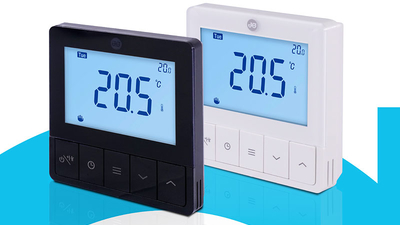Future plumbing trends: What’s in the pipeline?

If there’s one thing you can guarantee in the plumbing industry, it’s that change is always just around the corner. Whether it’s Speedfit’s invention of the plastic push-fit back in 1970’s, or the recent variations we made to our JG Layflat® pipe range, constant innovations are providing plumbers with new ways to overcome installation challenges. With the industry moving so quickly, it can be difficult to forecast future plumbing trends. One way of staying on top of this is to look towards the construction industry, where houses are being designed and built in many different ways.
Here are four ways the construction industry is bringing about change for the plumbing and heating sector and the future plumbing trends that are arising from these changes.
Can you ‘cedar’ trend ‘fir’ timber?
Modern building methods are increasingly using timber for construction and wooden frames are opted for in the building design. In fact, the Home Builder’s Federation states that around 18% of new homes are being built with timber frames. This presents a problem for plumbers who are still using copper pipes. Many of these modern buildings have wooden joists in the floor and floorboards on top, which makes it impossible to thread copper pipes. Plumbers need to work from underneath the joists, threading pipes through like cabling systems. To achieve this, you need to use flexible plastic pipes. Our JG Layflat® range is made from flexible polybutylene, which is not only easier to cut, but can easily be weaved through joists, threaded down within partition walls, and behind walls.

The popularity of modular buildings is on the up
As construction businesses face increasing pressure to complete jobs more quickly and efficiently, modular methods are becoming more common. A modular building is often constructed on a factory floor and assembled on site. Although they are mass produced, they come in many different structures, so there is no one-size-fits-all solution for first fix plumbing once the build is completed. One construction business may manufacture 10-20 different types of modular buildings, but there can be up to 300 ways to configure each one for plumbing, and no two rooms will be the same.
This means that it can be nigh on impossible to complete a first-fix installation with copper for a modular building. You will typically have a central water distribution point which runs through the middle of the building. There will also be standardised points in the infrastructure where plumbing installations can be clicked together and connected to the central water distribution point. Plastic push-fits are ideal for this because they do not require specialist tools to join effectively, and can be fitted and refitted with ease.

Through the looking glass
Over the last 10-15 years, there has been a growth in open plan living, with many domestic properties purposely being built to allow maximum light levels, often incorporating large volumes of glass in the design. It’s impossible to hang a radiator or any other heating system on a glass wall. In such scenarios installing Underfloor Heating (UFH) is the only effective solution. However, this can poses additional challenges, particularly in buildings that incorporate large concertina glass doors, creating an additional area for heat loss.

Embracing smart heating controls
With smart devices taking over our lives, smart controls are taking over the traditional heating controls. JG Underfloor Heating Controls solutions by John Guest allow for time and temperature control for individual rooms. Using such smart controls not only can you regulate individual room temperature remotely, but also save money spent in heating rooms not in use.
In many ways, a plumber’s job can be made easier or more difficult by the construction method chosen for each new build. To best prepare yourself for first fix challenges, it’s important that you have flexible and adaptable tools in the back of your van and for that, plastic, and Speedfit, is one way you can future-proof your plumbing methods for many years to come.
Read our blog post for more reasons to choose plastic plumbing fittings and pipes.
Need advice?
If you need advice on the right products for your project, and technical specification information, get in touch.
